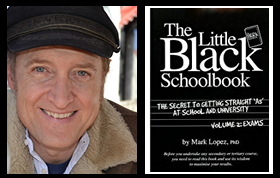Dr Mark’s The Meaning in a Nutshell
Shane Maloney, The Brush Off (1996)
Shane Maloney’s novel The Brush Off (1996) is a detective story that is crafted to be entertaining while achieving several artistic aims. The novel seems intended to put the Australian city of Melbourne on the literary map as an accepted setting for crime fiction alongside the conventional American settings like Los Angeles and New York. In addition, Maloney seeks to offer his audience insights into the harsh realities of the practice of politics in Australia. He also seeks to reveal the nature of the art world, while also providing a critique of the capitalist excesses of the adventurous entrepreneurs of the 1980s.
The novel operates within the conventions of the detective fiction genre. The story is told from the perspective of the detective, in this case an amateur detective, the political minder Murry Whelan. While telling Murry Whelan’s story, Maloney took great care to bring Melbourne to life in a vivid fashion that would make this place recognisable to readers familiar with this city while also making Melbourne seem like a suitable location for a detective story for readers who may be discovering Melbourne for the first time. In this way, the novel helps to put Melbourne on the map of suitable locations for crime fiction.
Maloney strongly supports the Left, but he is also an acute observer of the day-to-day realities of politics, much of which is unknown to the public. As someone who has been involved with left-wing politics, especially in the arts sector, Maloney is closer to, and more familiar with, the activities of left-wing politicians so he has written about them. Maloney depicts politicians as preoccupied with the behind-the-scenes deal-making and manoeuvring involved in attaining or maintaining power. He depicts the Labor Party minister featured in his novel, Angelo Agnelli, as a careerist whose first objective is personal advancement. As the minster for water and the arts, he cares little for the subject matter of his portfolios. The novel suggests that ambition motivates politicians to take on portfolios about which they are not knowledgeable or qualified.
The minister’s political advisor has to continually rescue him from scandal. Managing the media is presented as time-consuming and it takes up a great deal of the minister’s energy that should be devoted to portfolio work. In the pursuit of positive media coverage, Ministers may even bend the rules and buy favourable editorial comment in a journal by purchasing government advertising in it. In addition, despite relying heavily on their political advisors, it is the Minister who receives all the public recognition.
Politicians are shown to get ahead in their party through successful fundraising rather than by contributing effectively to policy development. This pursuit of funds can have a corrupting influence. Furthermore, the committees of inquiry established by ministers, which look into issues and provide policy recommendations, are shown to be deliberately stacked with sympathetic experts and manipulated in terms of their prospective findings. The readers are also introduced to a range of political types, from politically correct zealots to time-serving lazy political hacks.
Although the novel shows that political realities have diverted many Labor politicians from the noble ideals of pursuing social justice and equality, Maloney implies that the Left is the far more worthy side of politics than the alternative.
In regards to the depiction of the art world, Maloney shows sympathy for struggling artists. However, he does attack the art scene, which he finds to be elitist, self-serving and, for the most part, lacking substance. Maloney uses the novel to take swipes at pretentious pseudo-intellectuals and undeserving parasites who win government grants due to their talent for winning patronage rather than by virtue of their artistic talent, which may be lacking. Maloney also lampoons the intangibility of artistic value by depicting the valuing of art works to be dependent on fashion and perception rather than the intrinsic merit of the work.
Despite the shortcomings of some careerist Labor politicians and some figures in the art world, the real villain for Maloney is capitalism, especially the reckless capitalists who took great risks with other peoples’ money. Maloney regards this behaviour as unproductive, fuelled by greed, and inevitably destructive. These capitalists represent the worst manifestation of a capitalist system that Maloney fundamentally distrusts. The character Lloyd Eastlake is meant to epitomise this capitalist excess and the pursuit of self-interest at the expense of others.
Maloney believes that the 1980s witnessed the worst excesses of capitalism. It was an era when adventurous capitalists amassed great fortunes by borrowing large sums to trade with or to invest. When the stock market crashed in October 1987, many of the companies created by these capitalists collapsed and the small investors who put their faith in these capitalists lost their savings as the companies went bankrupt.
Student resources by Dr Mark Lopez
© Mark Lopez 2021 All RIGHTS RESERVED
The purpose of the concise notes of Dr Mark’s The Meaning in a Nutshell is to provide much needed help to students seeking to unlock the meaning of the texts with which they have to deal. (More elaborate notes are provided in lessons as part of my private tutoring business.)
Subject: The Brush Off meaning, The Brush Off themes, The Brush Off analysis, The Brush Off notes
